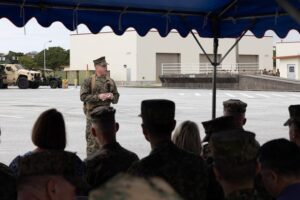Helicopter Route Near DCA Raises Safety Concerns After Fatal Crash
The National Transportation Safety Board (NTSB) has highlighted significant safety concerns regarding a helicopter route near Washington, D.C., following a tragic midair collision. The crash, which occurred in late January, involved an Army Black Hawk helicopter and a passenger aircraft, resulting in the loss of all lives on board.
NTSB Chair Jennifer Homendy addressed the media, emphasizing the dangers of the current helicopter route, known as Route 4, used by the Black Hawk. The route offers a mere 75 feet of separation from planes landing on runway 33 at Ronald Reagan Washington National Airport (DCA). This path was the same one taken by American Eagle Flight 5342 before the fatal accident. “We’ve determined that the existing separation distances between helicopter traffic operating on Route 4 and aircraft landing on runway 33 are insufficient and pose an intolerable risk to aviation safety by increasing the chances of a midair collision at DCA,” Homendy stated.
In response, the NTSB has recommended closing Route 4 when runways 15 and 33 are active and has urged the Federal Aviation Administration (FAA) to devise an alternative route. The preliminary investigation also revealed numerous near-misses at DCA between October 2021 and December 2024, with over 15,000 instances of minimal lateral and vertical separation, and 85 particularly close calls.
Further analysis of incidents between 2011 and 2014 showed that warnings meant to prevent midair collisions were triggered monthly. In many cases, helicopters were above altitude restrictions, and most advisories occurred at night.
The collision, which was widely circulated online, marked the first major commercial aircraft crash in the U.S. in nearly 16 years. The NTSB also pointed to possible malfunctions in the Black Hawk’s altimeter as a contributing factor. “We still have a lot of work to do in this area as the Black Hawk’s combined cockpit voice and flight data recorder does not record date information, time information or helicopter position information,” Homendy noted. The pressure altitude parameter was declared invalid.
The crash claimed the lives of Capt. Rebecca Lobach, Chief Warrant Officer Andrew Eaves, and Staff Sgt. Ryan O’Hara. American Airlines, in a statement, commended the NTSB’s efforts. “We continue to mourn the lives lost in the tragic accident involving Flight 5342,” the airline stated. “We’re grateful for the National Transportation Safety Board’s urgent safety recommendations to restrict helicopter traffic near DCA and for its thorough investigation.”
The Black Hawk, operated by Bravo Company, 12th Aviation Battalion from Fort Belvoir, was on a training flight. Both Lobach and Eaves were experienced pilots, with Eaves having 968 flight hours and Lobach 450, while O’Hara had 1,149 hours.
Misleading claims and conspiracy theories about the crash circulated in its aftermath, partly fueled by comments linking the incident to diversity policies, which contradicted the evidence of the crew’s extensive flight experience and the ongoing safety challenges at DCA.
Investigations also aim to confirm what information was available to the Black Hawk’s crew before the crash. Sean Payne from the NTSB mentioned they are collaborating with the Army and helicopter manufacturers to resolve data discrepancies. “We are working to determine if this bad data for pressure altitude only affected the [flight data record], or if it was more pervasive throughout the helicopter’s other systems,” Payne said.
A critical message from air traffic control for the Black Hawk to avoid the CRJ may have been missed seconds before the collision. Homendy expressed frustration over the inadequate safety measures, “It doesn’t take a tragedy like this to occur. Unfortunately, one did, and so we are calling on action.”






